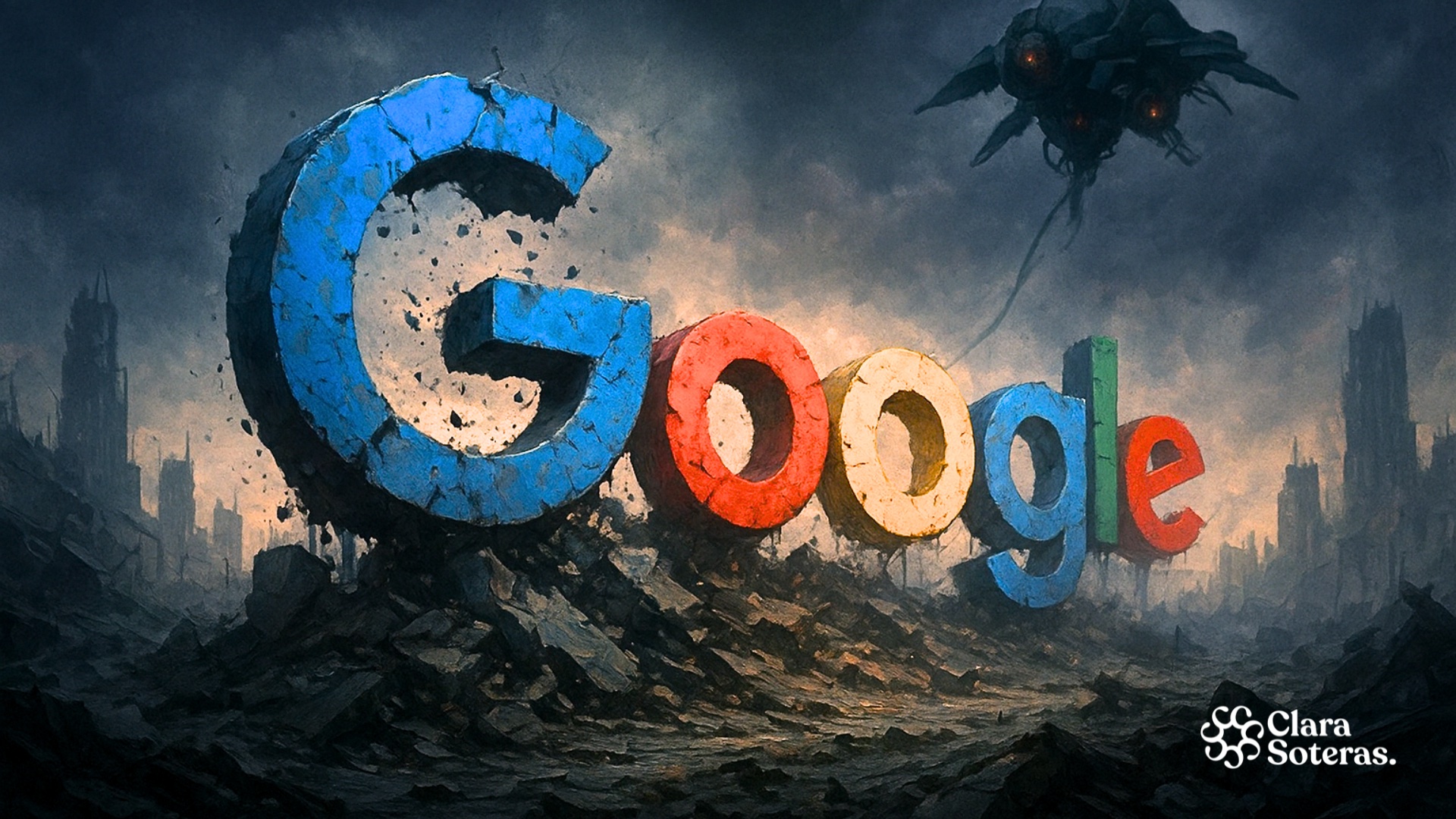A feeling of panic runs through digital media newsrooms. With the arrival of Google’s AI Overviews, many publishers see it as an existential threat to their traffic, their business model, their near future, and long-term sustainability.
In fact, recently published studies analyzing the evolution of clicks on different websites already indicate a drop in traffic, focused on projects with informational and not so much transactional intent, although we will have to wait for new changes and be attentive for when AI Mode arrives, which is already deployed in the United States.
Interview with Barry Adams: The New Challenges of SEO for News Publishers in 2026
A few weeks ago, I had the pleasure of sharing a long conversation with Barry Adams, an international SEO consultant and media expert, as we coincided at the Digital Olympus event in Amsterdam. It was a truly interesting conversation because although we talked a lot about SEO and Google, we shared visions and, above all, challenges in managing the relationship with clients and the media to explain where search is going and what is needed to continue working on the positioning of content created by journalists during the coming months.
And next, with his permission, I share his insights on what the strategic approach should be in newsrooms and boardrooms of communication companies from now on, after the deployment of AI Overviews on Google, already available in over 200 countries and 40 languages (available in Europe from the end of March 2025) and also thinking about everything that will change the deployment of AI Mode, the future of search, as defined by Google, and which places artificial intelligence at another level in Google’s own search engine. Just in the week of writing this article, Google has announced the expansion of AI Mode also in Europe, adding 36 new languages and 50 countries. So, now, it is available in more than 200 countries as well.
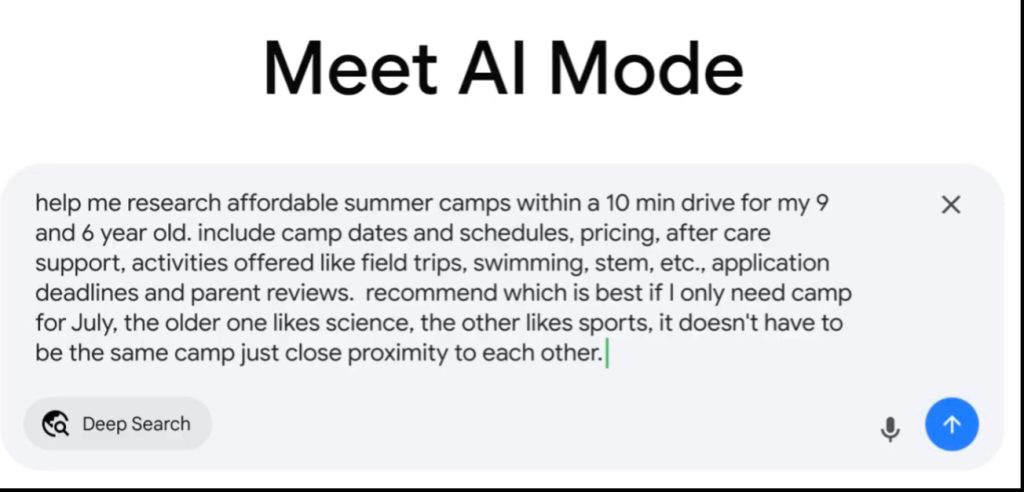
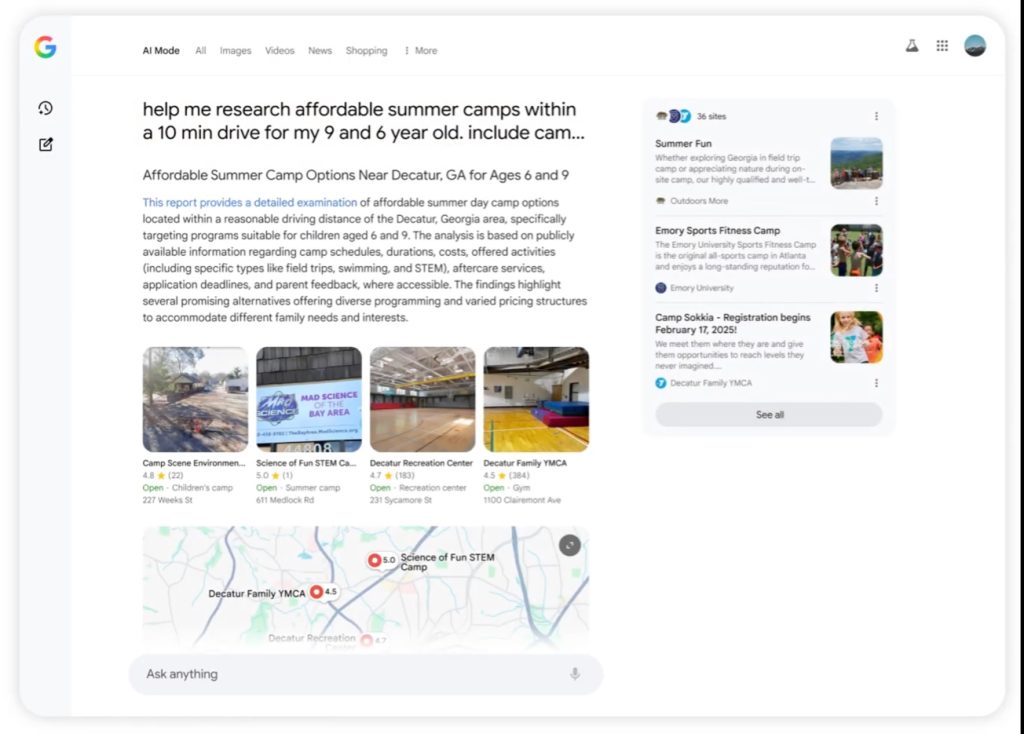
Barry Adams reveals an uncomfortable truth: AI is not the cause of the crisis, but a powerful accelerator that exposes pre-existing strategic weaknesses. According to Adams, the real threat does not come from an algorithm, but from complacency.
“I think a lot of publishers need to be a little bit honest with themselves and admit that the reason they are losing traffic is not because of Google, but because they have simply been coasting, without really innovating and without doing anything new or interesting to build a loyal base and link readers to them. They must make sure they have something valuable and unique to offer their readers, something that allows them to retain their audience. Achieve that the audience is loyal, so that they go directly to them, perhaps with an installed application, or directly to the web, or with an email newsletter, or by subscribing to their social media channels, or all of the above, so that they don’t really depend on what Google does next or what GPT does to get readers to them”.
Despite the concerns, SEO and search remain, by far, the largest source of traffic for the media. Therefore, publishers must continue optimizing, and abandoning SEO would be “stupid,” according to Adams, something which I also subscribe to myself. Because yes, SEO is not dead nor will it die, but it has changed, and our way of working and understanding it must also change. In relation to my last presentation at the Sistrix Digital Marketing meetup in Barcelona, I would say that SEO is not dead but we cook it differently (I invite you to take a look at the presentation SEO Hot Pot: Cooking the Future of Search).
The conversation with Barry lasted over a long half hour, and luckily I recorded it, because he shared many real-life insights from his day-to-day with his clients and his work as a consultant. So here I leave you a small schematic summary with all the keys to reframe the conversations of audience teams in the media and also with strategic directors and, ultimately, the CEOs of the large communication groups.
First advice: think long-term. Do you want your editorial brand to still exist in 5 years? If the answer is yes, I invite you to keep reading. 😉
The 5 Counterintuitive SEO Lessons for Media Sustainability, with Barry Adams
Lesson 1: Re-focus on Search: Breaking News and Trends
Traffic to breaking news still exists because, for the moment, AI Overviews do not respond or appear for these searches. The Top Stories module continues to be prioritized in the SERP for those topics and, as Barry points out, creating context content that links and connects to those news is a good strategy.
I leave here a comparison of evergreen searches and current affairs topic searches that you can find in the book ‘SEO Playbook for News Publishers‘ that I have just published. It is one of the examples I present in the last chapter. As you can see in the images, the Top Stories carousel is still there.
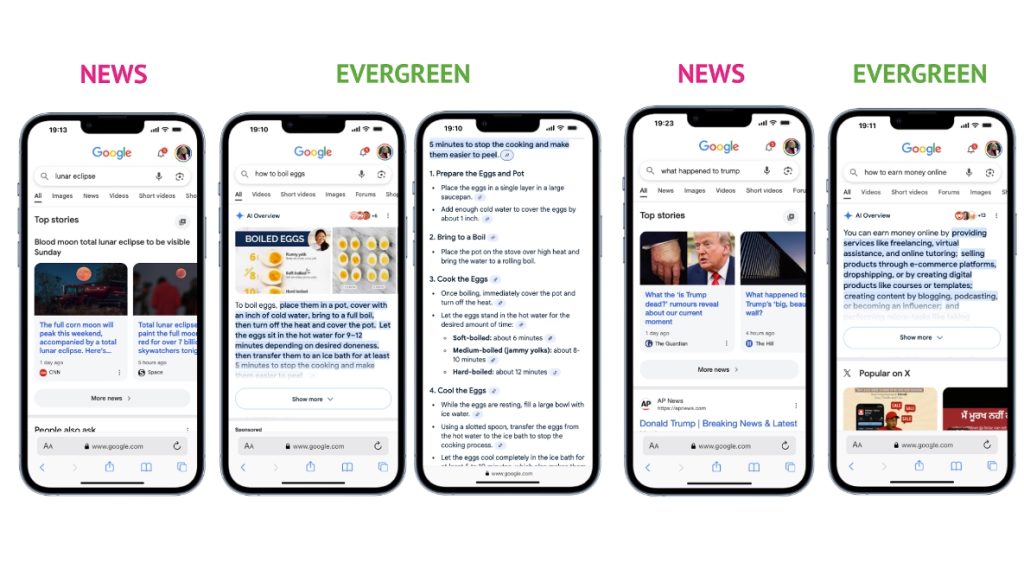
Lesson 2: Gaining Perspective with Google Discover, the Dangerous Siren Song of “Extra” Traffic
For many media outlets, Google Discover has become a massive source of traffic, reaching up to 90% of their visits in some cases. However, Adams warns that building a strategy on this basis is a “very high-risk strategy”. I could summarize his opinion in a few lines but I prefer to share the complete answer to my question because Adams is an open book:
“Discover encourages bad habits. It pushes you to write clickbait headlines with stories that are not actually interesting, that are not journalism, but rather something that people quickly open, skim, and go back. So it encourages publishers to do the opposite of what they should be doing, which is why I have always told publishers to see it as extra traffic, a bonus, and not as main traffic. But Discover traffic is now so large that it is very difficult for publishers to see it as an extra.
They think: ‘Oh, this is our biggest source of traffic,’ because in many cases it is, by far. Then they believe they have to optimize everything for Discover, to make sure they get more traffic. And I think that has always been the wrong thing. Secondly, I must point out that Discover is not a core Google product. Google does not make money from Discover. In fact, it generates losses. Yes, there is some advertising there, but it does not cover the costs of maintaining it.
So Google could literally eliminate Discover as a product tomorrow and nothing would happen to it. But for a publisher, if Google eliminated Discover tomorrow, they would have a big problem. Especially if 90% of their traffic from Google comes from Discover.”
In fact, Google has announced new changes in Google Discover that have already activated the publishers’ alerts. And the thing is that from now on, you will be able to
Follow your sources of information directly in the feed , but not only that, but in addition, content creator profiles, their posts on Instagram or YouTube, will begin to appear, much further reducing the showcase to which the media had access to expose and rank their content.
As Adams rightly says, “if you’ve built a strategy around what is essentially extra traffic, you’ve made a wrong decision somewhere along the way”.
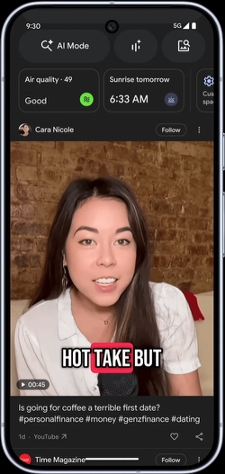
Lesson 3. Evergreen Content is Not Dead, its Mission Has Changed
With AI Overviews summarizing answers directly on the results page, direct traffic to evergreen content—such as explanatory or analysis articles—has decreased. Does this mean they are no longer worth creating? Absolutely not.
For me, and we agree with Barry, this content remains crucial, but its mission has changed. It is no longer so much about capturing the first click from Google, but about enriching the journey of the user who is already on your website. The smart strategy is to link from a breaking news story to a context article that offers more depth. In this way, more value is provided to the reader, time on site is increased, and more page views are obtained from a single visit. Adams cites a clear example: a breaking news story about government protests in Nepal can and must link to an in-depth article that explains the causes of the conflict, thus capturing greater reader interest in a single visit. “And if you only create content to get a click from Google, that is stupid. You should never do that. It’s a very sure way to fall down the low-quality content rabbit hole and you shouldn’t be doing it”.
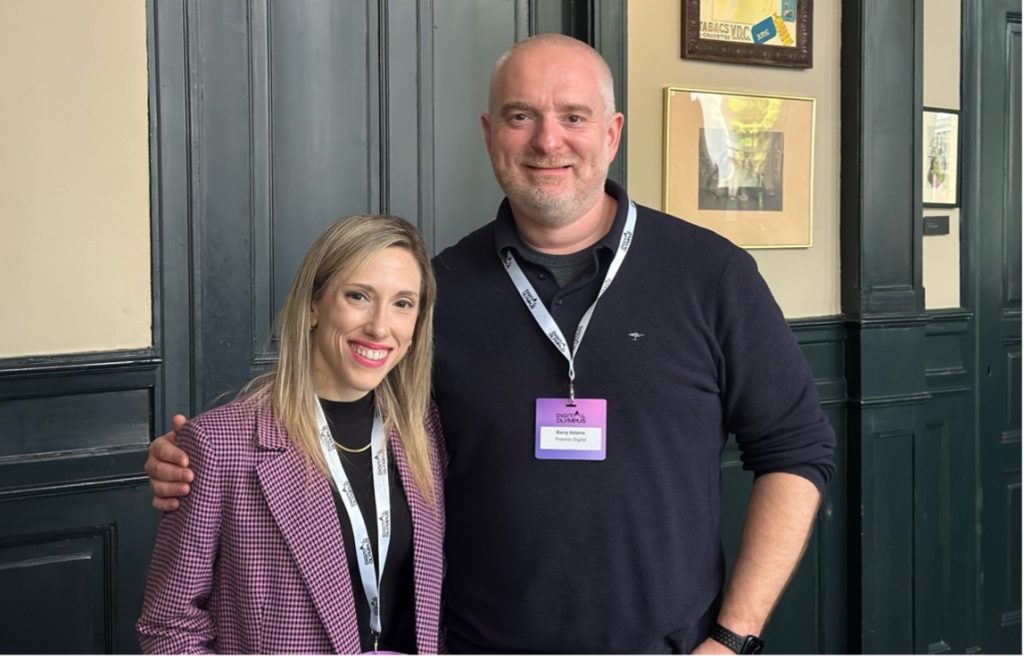
Lesson 4. Sustainability Demands Overcoming the Advertising Model
The almost exclusive dependence on programmatic advertising is another one of the pillars that is shaking. In fact, many media outlets have been suffering since the deployment of the June and also the August core updates with drastic drops in traffic through Google Discover, which produce a very significant reduction in page views. They share with me off the record that some media outlets are already taking internal measures to reduce staff as the loss of income is really significant.
Adams is emphatic in stating that “the advertising-funded publishing model is no longer sustainable”. Margins have been decreasing for a decade and, in his own words, the advertising market is “rotten to the core”. Survival demands diversifying revenue streams. Media outlets must actively explore alternative models such as building direct relationships with advertisers, without technological intermediaries, implementing premium models with paywalls, or soliciting voluntary donations from readers. Also selling related products, such as books and merchandise.
Upon sharing my personal vision with him about the need to change KPIs in the media, Adams confirms that yes. In essence, the challenge is not simply to find new revenue streams, but to redefine the media’s value proposition: moving from being an audience intermediary for advertisers to an indispensable content brand for its community.
And here let me add an important variable that, working as a consultant with Spanish-speaking media, such as in Spain and Latin America, I consider vital for the success of the strategy: knowing which audience we are addressing. What do they need? Are they willing to pay for any product or service that we can offer them? The cultural and territorial difference, as well as the size of the media outlet and the brand it has in each territory, is an essential point to analyze before deciding to launch, for example, a paywall or subscriptions to a newsletter.
Lesson 5. SEO is No Longer Just SEO: It’s Product Strategy
The AI era is also forcing an evolution in the role of the SEO professional within media organizations, and it is something that, personally, I have been seeing for some time. In fact, when I meet someone in the sector, I no longer define myself simply as an “SEO consultant”; for me, it goes much further, and surely many of you reading this will have the same feeling. We also share this with Barry Adams. We act more as business strategy consultants, who understand the product and the brand, than specifically as SEOs.
According to Adams, SEO is no longer an isolated technical task in a corner of the marketing department ; it is becoming a “marketing product manager” role. This is because modern SEO touches almost all aspects of the business: technology, analytics, marketing, product development, and commercial strategy.
Barry Adams argues that SEOs deserve “a more important seat at the table”. They need to be in direct conversations with decision-makers—editors-in-chief, operations directors, vice presidents of marketing—to be able to drive the deep changes that are required. SEO has ceased to be a tactical discipline to become a strategic pillar of the business. With this idea, that SEO should be part of the comprehensive knowledge of newsrooms and that it goes far beyond the audience departments, I was able to share with Barry Adams the publication of my book ‘SEO Playbook for News Publishers‘, designed so that journalists, writers, editors, and also strategy or business directors, can understand the role that organic positioning of content and news plays. We talked about technical but also editorial topics, workflows, audience and also about Google Discover, breaking news, planning and obviously AI. In fact, Barry bought the book so quickly that it already arrived at his house, while I am still waiting for the first paper copies 😉 I take this opportunity in this article to thank him for his trust and support.
Beyond SEO: Media Survival is Possible
The message that emerges from Barry Adams’ ideas is clear: the media’s battle is not against artificial intelligence. The real fight is against inertia, dependence on third parties, and an obsolete business model. AI is only the catalyst that has made these weaknesses impossible to ignore for longer and has forced us all to take the reins. Now, as SEO professionals, it is in our hands to know how to reorient the horse and make the media understand that the strategy must be changed and that no more juice will come out of that lemon.
The path to survival and prosperity does not go through finding the latest trick to fool an algorithm, but through a fundamental change in mindset. It is about rebuilding the relationship with the audience, offering undeniable value, and building a direct and loyal community as the ultimate defense against any technological change that may be coming.
In a world of cheap clicks and ephemeral content, are we prepared to start building a community or will we simply continue counting page views?
Thank you for reading and getting this far! If you found it interesting and want to continue the conversation or give me feedback, you can send me an email or find us at one of the events where I will be in the coming weeks.
